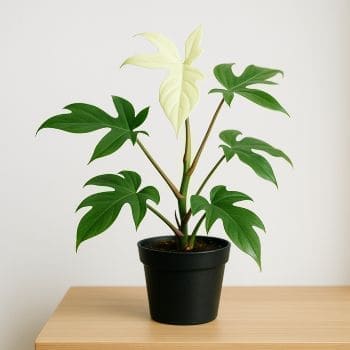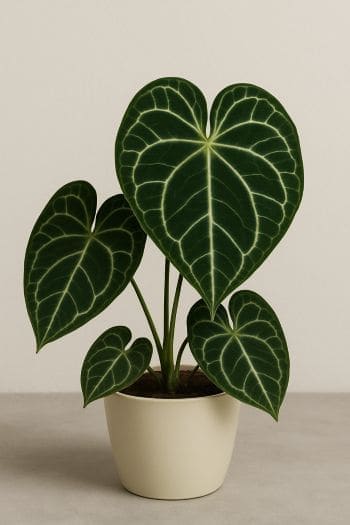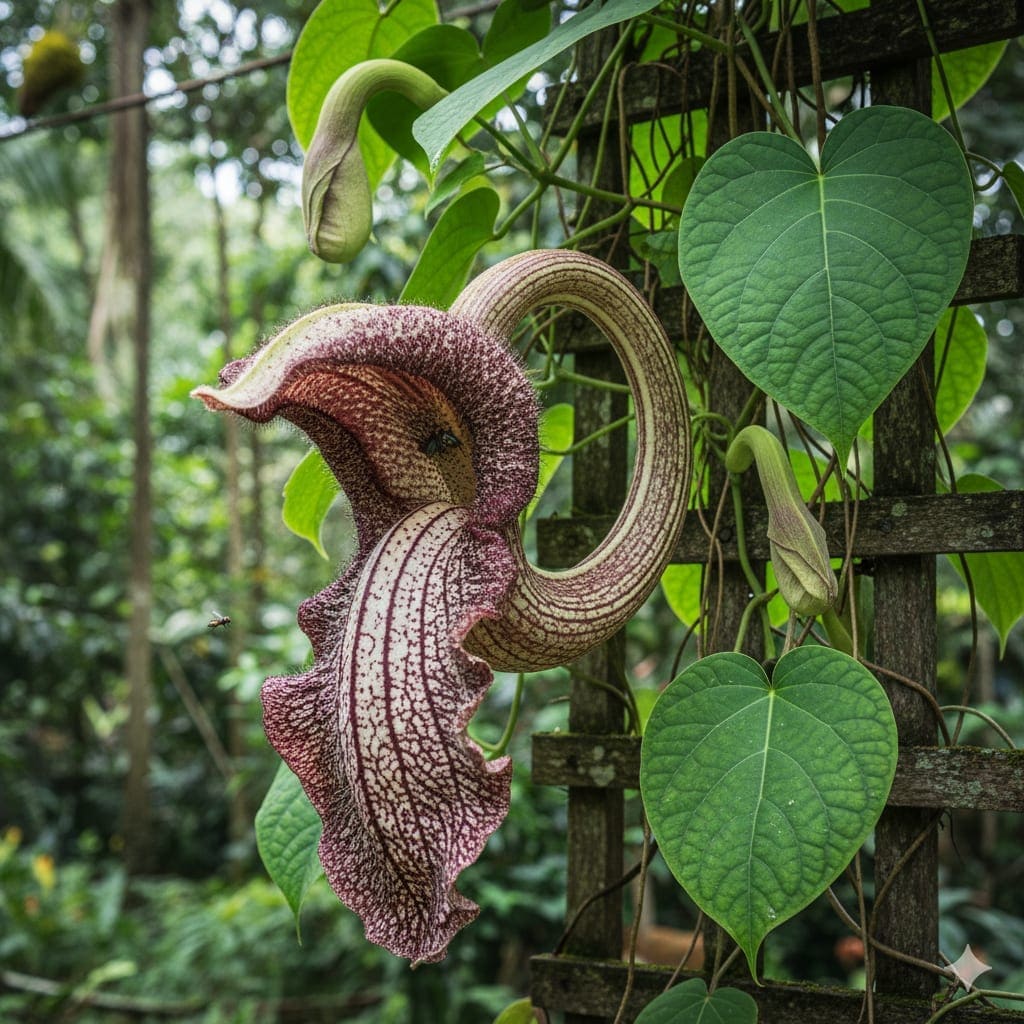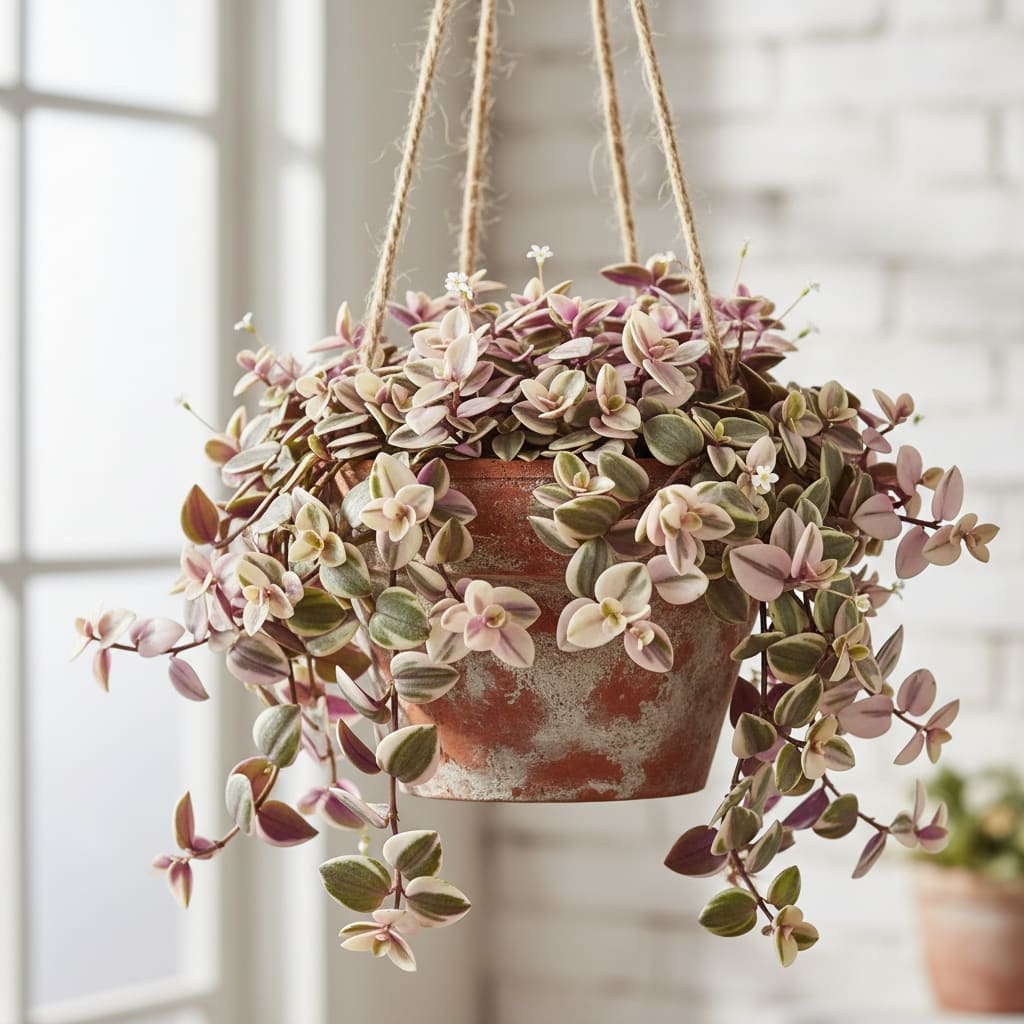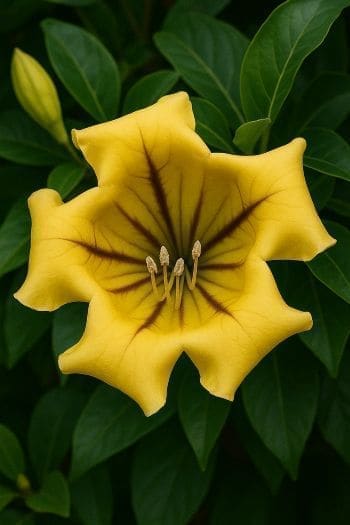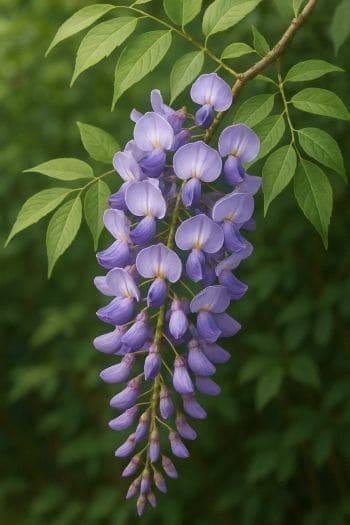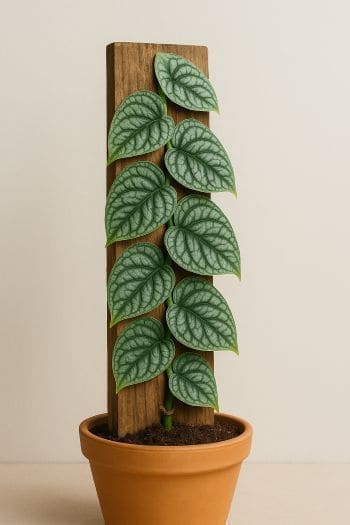Philodendron Florida Ghost (Philodendron squamiferum x pedatum) Care Guide
Overview
The Philodendron Florida Ghost is a striking tropical hybrid between Philodendron squamiferum and Philodendron pedatum, native in origin to the warm, humid forests of Central and South America. This plant is prized for its unusual leaf coloration—new growth emerges a ghostly white before gradually transitioning through pale green to a mature deep green. Its climbing habit and unique foliage make it a favorite among aroid collectors and indoor plant enthusiasts.
With the right care—bright, indirect light, moderate watering, and high humidity—this plant can thrive indoors, producing its signature spectral leaves throughout the growing season.
Identification & Growth Habit
The Philodendron Florida Ghost has lobed, elongated leaves with a distinctive multi-point shape inherited from its parent species. Juvenile leaves are creamy white, sometimes with a translucent quality, and gradually darken as chlorophyll develops. The plant has a climbing growth habit and produces aerial roots along its stem, which it uses to anchor to supports such as moss poles or trellises.
Mature specimens can reach several feet in height when given vertical support, with leaves growing larger and more deeply lobed over time.
Light & Placement
Provide bright, indirect light to encourage the production of white juvenile leaves. Too little light will result in fewer ghost leaves and slower growth, while direct midday sun can scorch the delicate foliage.
- East- or north-facing windows are ideal; south- or west-facing windows may require sheer curtains.
- Supplement with full-spectrum grow lights in low-light homes, ensuring at least 10–12 hours of light daily.
Rotate the plant periodically to promote even growth and prevent leaning toward the light source.
Watering & Humidity
Water when the top inch of soil feels dry to the touch. Always use pots with drainage holes and empty saucers after watering to prevent root rot.
- During active growth (spring and summer), maintain consistent moisture without waterlogging.
- In winter, reduce watering frequency as growth slows, but monitor soil moisture to avoid complete dryness.
This tropical hybrid thrives in high humidity—around 70% relative humidity is ideal. While it can adapt to average household humidity, growth and leaf quality improve with added moisture. Use a humidifier, group plants together, or place the pot on a pebble tray with water to increase humidity.
Soil & Repotting
Use a loose, well-draining mix with a slightly acidic pH. A blend of peat moss, perlite, and high-quality potting soil supports healthy root development and prevents compaction.
- Repot every 2–3 years or when roots begin circling the pot.
- Choose a container only slightly larger than the current one to avoid excess moisture retention.
Fertilizing
Feed monthly during the growing season (spring and summer) with a nitrogen-rich liquid houseplant fertilizer diluted to half strength. Avoid fertilizing in fall and winter when the plant’s growth naturally slows.
Over-fertilizing can cause salt buildup and leaf tip burn—flush the soil with plain water every few months to prevent accumulation.
Pruning & Training
Prune to remove yellowing or damaged leaves and to control size. Use clean, sharp shears to make cuts just above a node.
Because the Philodendron Florida Ghost is a climber, training it on a moss pole, trellis, or stake will encourage larger leaves and a more upright growth habit. Secure stems gently with plant ties as they grow.
Propagation
The most reliable method of propagation is via stem cuttings:
- Choose a healthy stem with at least one node and one leaf.
- Using sterilized scissors or pruners, cut just below the node.
- Place the cutting in water or directly into moist, well-draining soil.
- If rooting in water, change the water every few days to keep it fresh.
- Once roots are 2–3 inches long, transplant into a pot with the recommended soil mix.
Common Problems
Pests
- Spider mites – Look for fine webbing and stippled leaves. Increase humidity and treat with insecticidal soap.
- Mealybugs – Identify by cottony clusters on stems and leaf joints. Remove manually and apply horticultural oil.
- Scale insects – Appear as small, brown bumps; scrape off gently and treat with neem oil.
Diseases
- Root rot – Caused by overwatering; remove affected roots and repot in fresh, well-draining soil.
- Leaf spot – Often fungal; remove affected leaves and improve air circulation.
Toxicity & Pet Safety
The Philodendron Florida Ghost is toxic to humans and pets if ingested, due to calcium oxalate crystals. Keep out of reach of children, cats, and dogs, and wear gloves when pruning if you have sensitive skin.
Styling & Decor Tips
With its sculptural leaves and climbing habit, the Florida Ghost makes a statement in bright living rooms, offices, or conservatories. Train it up a moss pole for a vertical accent or let it cascade from a high shelf for a more relaxed look. Its shifting leaf colors pair beautifully with neutral pots or minimalist interiors.
Varieties & Cultivars
As a specific hybrid, the Florida Ghost does not have widely recognized cultivars, but leaf coloration can vary among individual plants. Some produce more persistent white leaves, while others transition quickly to green depending on light and care conditions.
Buying Tips & Maturity
When selecting a plant, look for firm, blemish-free leaves and evidence of active growth. Juvenile plants may have smaller, less lobed leaves; with time and proper support, mature foliage will become larger and more deeply divided. Ask the seller about the plant’s growing conditions to ensure a smooth transition to your home environment.
Seasonal Care
- Spring/Summer: Peak growth period—maintain higher watering frequency, fertilize monthly, and ensure bright, indirect light.
- Fall/Winter: Reduce watering, stop fertilizing, and protect from cold drafts. Consider supplemental lighting if natural light decreases significantly.
FAQ
- Why are my Florida Ghost’s leaves turning green quickly?
Leaf color changes naturally as chlorophyll develops; brighter light can prolong the white phase. - Can I grow this plant outdoors?
Only in warm, frost-free climates; otherwise, keep it indoors or move it outside in summer when temperatures are above 65°F. - How fast does it grow?
Growth rate is moderate; with optimal conditions, expect several new leaves per growing season. - Do I need a moss pole?
While not strictly necessary, vertical support encourages larger leaves and a more attractive form. - What’s the best way to clean the leaves?
Wipe gently with a damp cloth to remove dust; avoid leaf shine products that can clog pores.
Source: The Spruce
